- Subaru today announced its year of 50th celebrations, leading up to its 50th anniversary on February 15, 2018.
- Subaru will offer a series of special edition model vehicles that will debut in early 2018. Further details on all programs will be announced in due course.
 Company History
Company History
The company was founded on February 15, 1968 by two American businessmen: Malcolm Bricklin and Harvey Lamm. In 1965 Malcolm Bricklin was selling franchises for motor scooters that included the Fuji Rabbit and the tiny Subaru 360. Bricklin then formed Subaru of America, Inc. (SOA) in order to sell Subaru franchises with Harvey Lamm, who at that time, was working in his family’s furniture store in Philadelphia. From 1967 to 1990, Lamm served as chairman of the board, chief executive officer, president and chief operating officer of Subaru of America, Inc.
The very first Subaru ‘office’ was in fact a small rental unit in Balboa Park, California, which Lamm set-up in 1967. The following year, Subaru of America was officially established in Bala Cynwyd, Pennsylvania before moving to larger quarters in Pennsauken, New Jersey in 1970. The headquarters moved to its current Cherry Hill, New Jersey location in October 1986. SOA is currently developing a new headquarters complex in Camden, New Jersey, which is expected to open in early 2018.
In the early years, Bricklin and Lamm’s business model was to sell distributor franchises to investors across the country, resulting in a total of 13 distributors nationwide. In subsequent years, SOA bought out most of the original distributors, with the exceptions of Subaru of New England (SNE) and Subaru Distribution Corp. (SDC) which covers NY and parts of NJ.
On August 31, 1990, Fuji Heavy Industries (FHI) acquired Subaru of America through a $6 per share cash offer. FHI had already purchased just under half of SOA stock from prior investments.
Meaning of the Subaru Name
Fuji Heavy Industries (to be renamed Subaru Corporation in April 2017) traces its roots to the Nakajima Aircraft Company, a leading Japanese aircraft manufacturer. By 1950, Nakajima was known as Fuji Heavy Industries and FHI was incorporated on July 15, 1953 when five Japanese companies, known as Fuji Kogyo, Fuji Jidosha Kogyo, Omiya Fuji Kogyo, Utsunomiya Sharyo and Tokyo Fuji Sangyo, joined together. The Subaru name means ”unite” in Japanese. The company logo is the six stars recognized by the Japanese in the star constellation Pleiades (Subaru in Japanese).
1968-1988
The first Subaru – the 360 – reached the United States in May, 1968. Priced at $1,290, it was $300 cheaper than the similar-looking Volkswagen Beetle and was 1,000 pounds lighter. This made it exempt from federal safety standards, and the car was required to meet only the less-stringent standards of individual states. In contrast to the company’s modern reputation for safety, Consumer Reports rated the 360 as ”unacceptable”, which quickly affected sales.
A larger model was needed, and in 1970, Subaru developed the FF-1. The front-drive FF-1 was handy for driving in snow and gave Subaru a new market position as the first Japanese manufacturer to feature front-wheel drive, as well as the first Subaru vehicle to have the horizontally-opposed “boxer” engine. The FF-1 was replaced by the larger, more powerful Leone series in 1973, which was marketed simply as either a DL or GL model regardless of body style, in order to focus on establishing the Subaru name. In 1975, the company introduced its first station wagon with all-wheel drive – the DL/GL. It is a major automotive milestone, as the first mass production popular priced 4WD passenger car. It spawned a revolution in the mass adoption of 4WD and AWD cars and crossovers.
The 1973 Oil Crisis helped the makers of small cars, and Subaru was no exception. However, Subaru then suffered from Yen/Dollar exchange rate changes which forced FHI to raise prices with a resultant sales drop. With supply now exceeding demand, the company suffered severe losses.
In 1978, the company debuted the BRAT (Bi-drive Recreational All-terrain Transporter) to meet the demand for small pick-up trucks in the US. A notable owner of a BRAT was President Ronald Reagan.
In 1981, the company was an inadvertent beneficiary of a MITI trade agreement between Japan and the US whereby Japan voluntarily agreed to limit the number of cars sent to the United States. With supply restricted, Subaru added features and raised the average price of its cars from $6,000 to $8,000. At this time SOA became highly profitable; however, it was an unsustainable position for the company.
1989 – Manufacturing in the US.
In 1989, Subaru, together with Isuzu opened a factory in Lafayette, Indiana called Subaru-Isuzu Automotive, Inc., or SIA. The plant initially produced the Subaru Legacy and Isuzu Rodeo. In 2001, FHI purchased the Isuzu holding for $1 and renamed the factory as Subaru of Indiana Automotive, Inc. From 2007 until 2016, SIA also produced the Toyota Camry under license.
In 2003, SIA became the first automotive assembly plant to be designated a Backyard Wildlife Habitat by the National Wildlife Federation. In 2004, SIA became the first automotive manufacturing facility in the U.S. to reach zero-landfill status.
The plant is currently operating at its highest-ever capacity and is expected to produce close to 400,000 Subaru vehicles in 2017, including the Legacy and Outback models and the all-new 2017 Impreza, the first time Impreza has been built in the US. A new 3-row SUV model is also expected to be produced at the plant beginning in 2018.
1989-1994
In the late 1980s and early 1990s, Subaru signaled an evolution to its positioning with the introduction of sporty coupe models; the XT in 1986 and the SVX in 1992. The Legacy model, a clear move upscale for the brand, was introduced in 1989.
However, the widening of the brand also caused Subaru to lose its focus on its core American buyers. By 1993, the company was showing record financial losses, high inventory (300-day supply), six consecutive years of declining sales, ineffective advertising, and a confusing brand image.
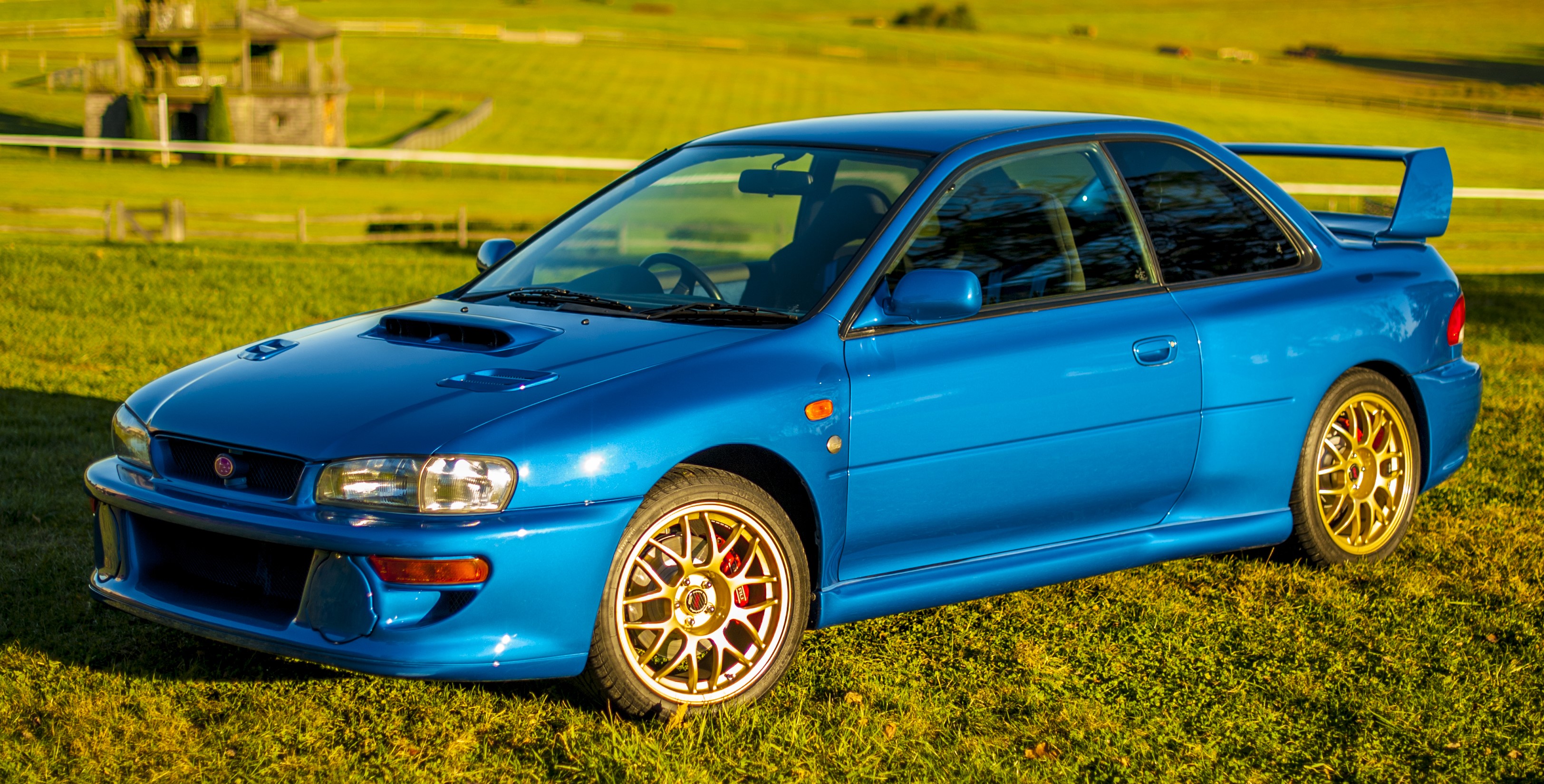
1995-2005
In 1995, in response to the growing trend for SUVs, SOA launched the Outback – the “World’s First Sport Utility Wagon.” Supported by a marketing campaign using Crocodile Dundee actor, Paul Hogan, the Outback model helped Subaru sales in the US recover.
General Motors took a 20 percent share in FHI from 1999-2005. In 2004, GM’s subsidiary Saab sold a version of Fuji’s Subaru Impreza – the 9-2x – built by FHI in Japan. In 2005, Toyota Motor Corp. (TMC) paid approximately $300 million to GM for 68 million shares, equal to an 8.7 percent stake in Fuji. In 2007, TMC paid $311 million to raise its stake in Subaru parent Fuji Heavy Industries to 16.5 percent. This partnership led to Toyota production by FHI and the development of the BRZ/FRS/86 sports car which debuted in 2012.
The introduction of the WRX to the US in 2001 revived attention in the brand. In 2002, looking to further expand its offerings, the company developed the Baja model, an open bed pick-up, based on the Legacy.
By 2005, Subaru sales were stagnant and the company, now led by Thomas J. Doll, decided that a change was needed.
2006-2017
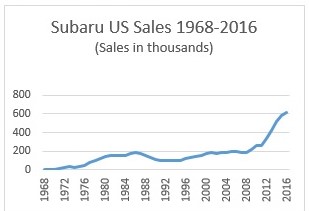 In late 2006, a new creative agency, Minneapolis-based Carmichael Lynch was hired and a new set of emotionally charged advertisements followed. Instead of buying a Super Bowl slot, the company sponsored Animal Planet’s Puppy Bowl.
In late 2006, a new creative agency, Minneapolis-based Carmichael Lynch was hired and a new set of emotionally charged advertisements followed. Instead of buying a Super Bowl slot, the company sponsored Animal Planet’s Puppy Bowl.
From 2007, the company readjusted pricing in order to protect residual values, and Subaru vehicles grew in size to better reflect US tastes. New models; Crosstrek and BRZ were added to the line-up. Focusing advertising on safety, reliability, versatility and performance, Subaru sales in the 10 years from 2007-2017 have risen consecutively from below 200,000 to over 600,000 vehicles per year, and the company’s continued sales growth is currently the longest in the industry. Subaru now outsells many established brands as the eighth best-selling brand in America. A new 3-row SUV model from the company has been announced for early 2018.
50 Years of Subaru Products

360
Production:1968-69
Subaru 360 debuted in the U.S. in 1968 and was the first car imported by Subaru of America, Inc.The little car was immediately recognizable by its bug-eyed headlights and forward-opening doors. Powered by a 356 cc, 25 hp, two-stroke engine, this microcar reached 50 mph in 37.5 seconds and had a top speed of 69 mph. What the 360 lacked in performance, it made up for in affordability and efficiency with a price of $1297 and a fuel economy of 66 miles per gallon.
Subaru 360
- Production: 1968-1969
- Rear wheel drive
- 2-stroke, air cooled, 356 cc engine
- Horsepower 25, Torque: 25.4 lb-ft.
- 0-50 in 37.5 seconds, 1/4 mile in 28.5 seconds
- 66.3 mpg
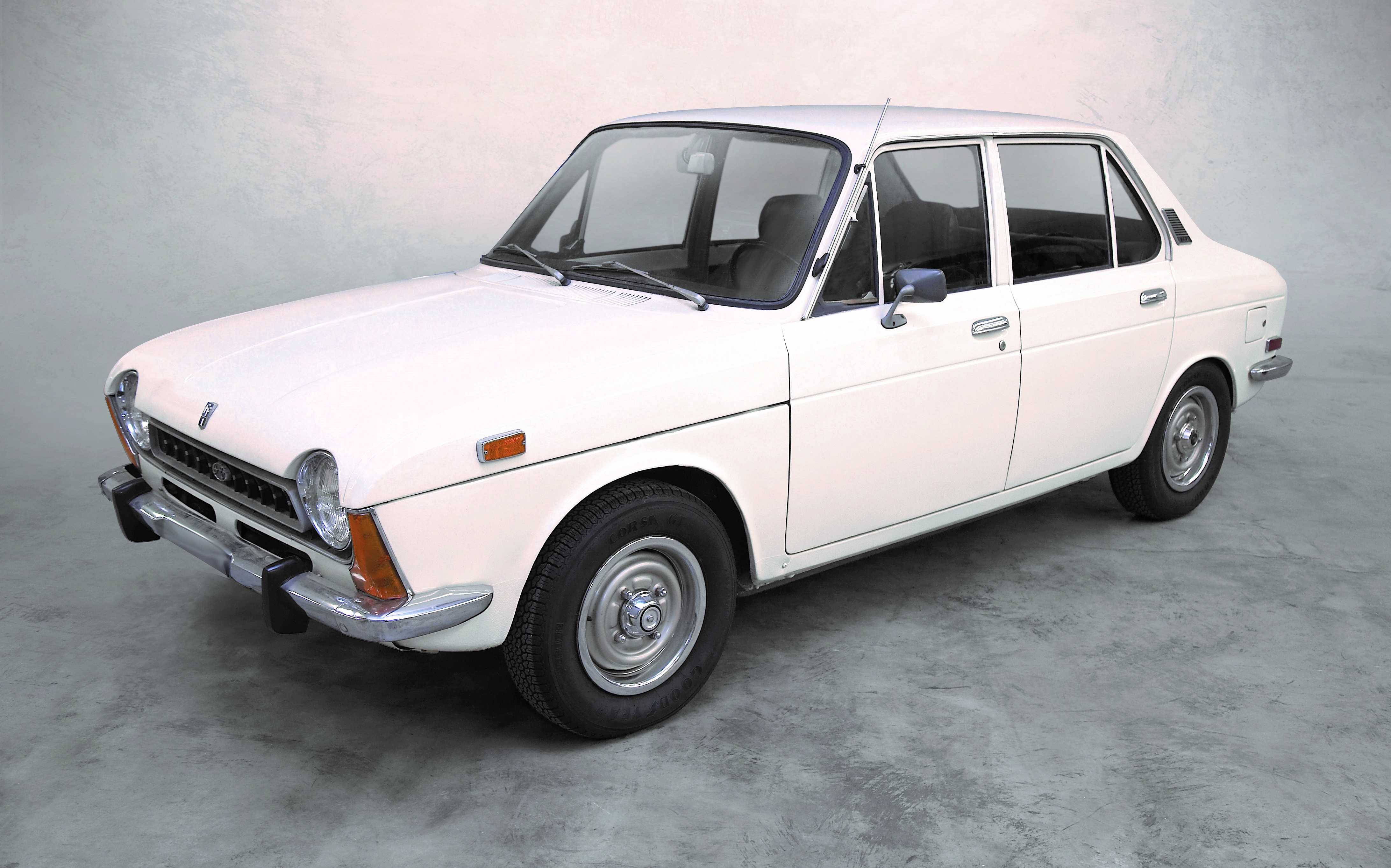
FF-1
Production: 1970-72
The successor to the 360 was the FF-1, a front-wheel drive compact car that was better sized for the American driver. Available in two and four-door models, the FF-1 was the first Subaru to be powered by a horizontally-opposed (boxer) engine. The BOXER engine, a hallmark of Subaru engineering, provided a low center of gravity and better balance and handling. With 61 hp and 65 lb-ft. of torque, the FF-1 had over twice the power as the 360.
Subaru FF1
- Production: 1970-1972
- Front wheel drive
- First Subaru with a four-cylinder BOXER engine
- Horsepower: 61, Torque: 65 lb-ft.
- Offered in 2-Door and 4-Door models
- Known as the “1000” outside the US
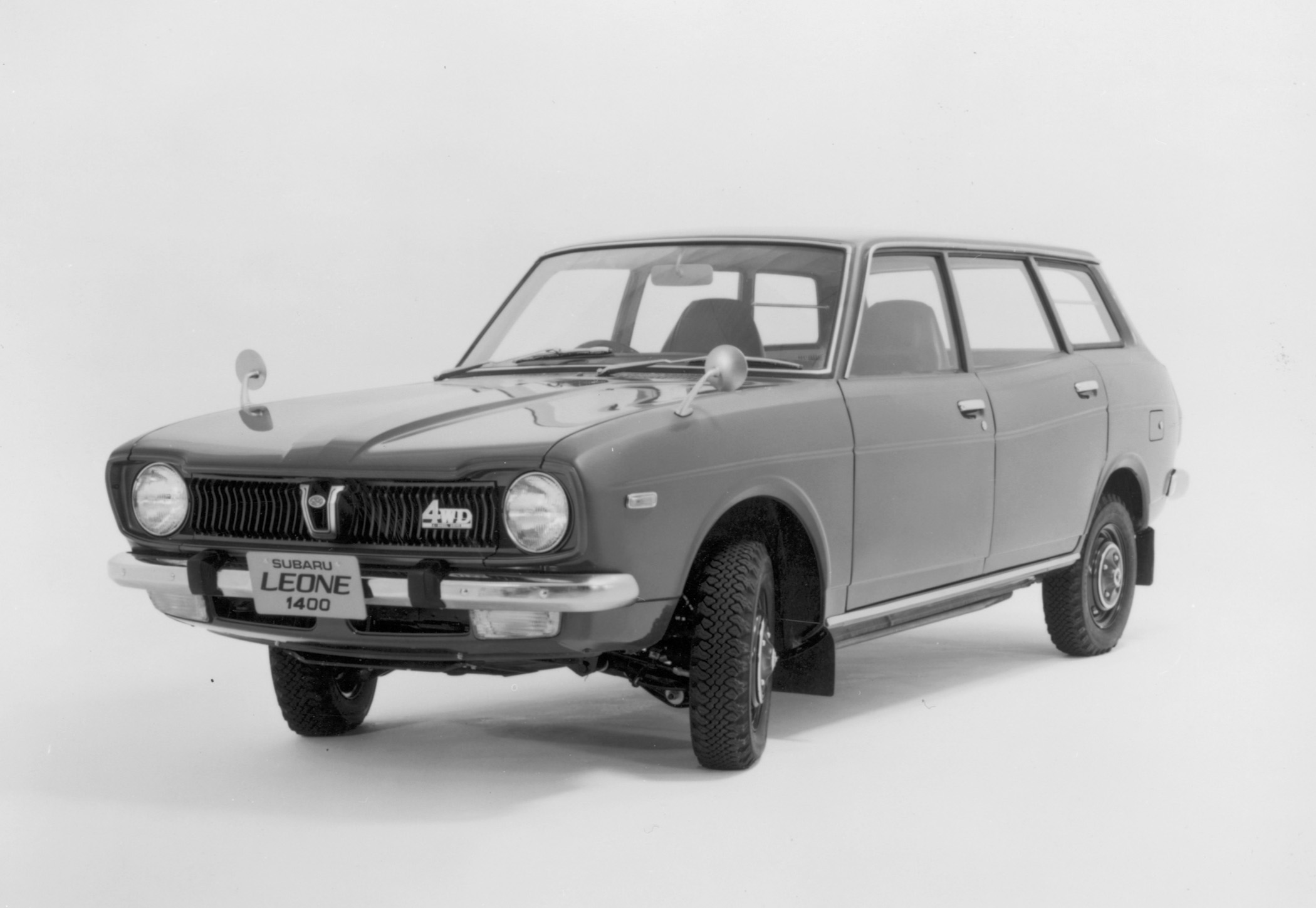
DL/GL Wagon
Production: 1973-90
The DL and GL were available in sedan, coupe and wagon body styles; however, it was the wagon that quickly gained in popularity because it introduced Americans to affordable and economical four-wheel drive. In 1975, “On-Demand” 4WD became available for the wagon allowing drivers to switch from front-wheel to four-wheel drive while on the go, by simply pulling a lever next to the shifter. This rugged, go-anywhere car had great appeal to people with active outdoor lifestyles. In response, Subaru of America forged an agreement with the U.S. Ski Team in 1975 to make the wagon their official car and this relationship continued until 1994.
Subaru DL/GL Wagon
- Production: 1973-1990
- Two trim levels were offered: DL and GL
- First model to offer “On-Demand” 4WD in 1975
- Three generations were produced
- The official car of the US Ski Team from 1975-1994
- Known as the “Leone” outside the U.S.
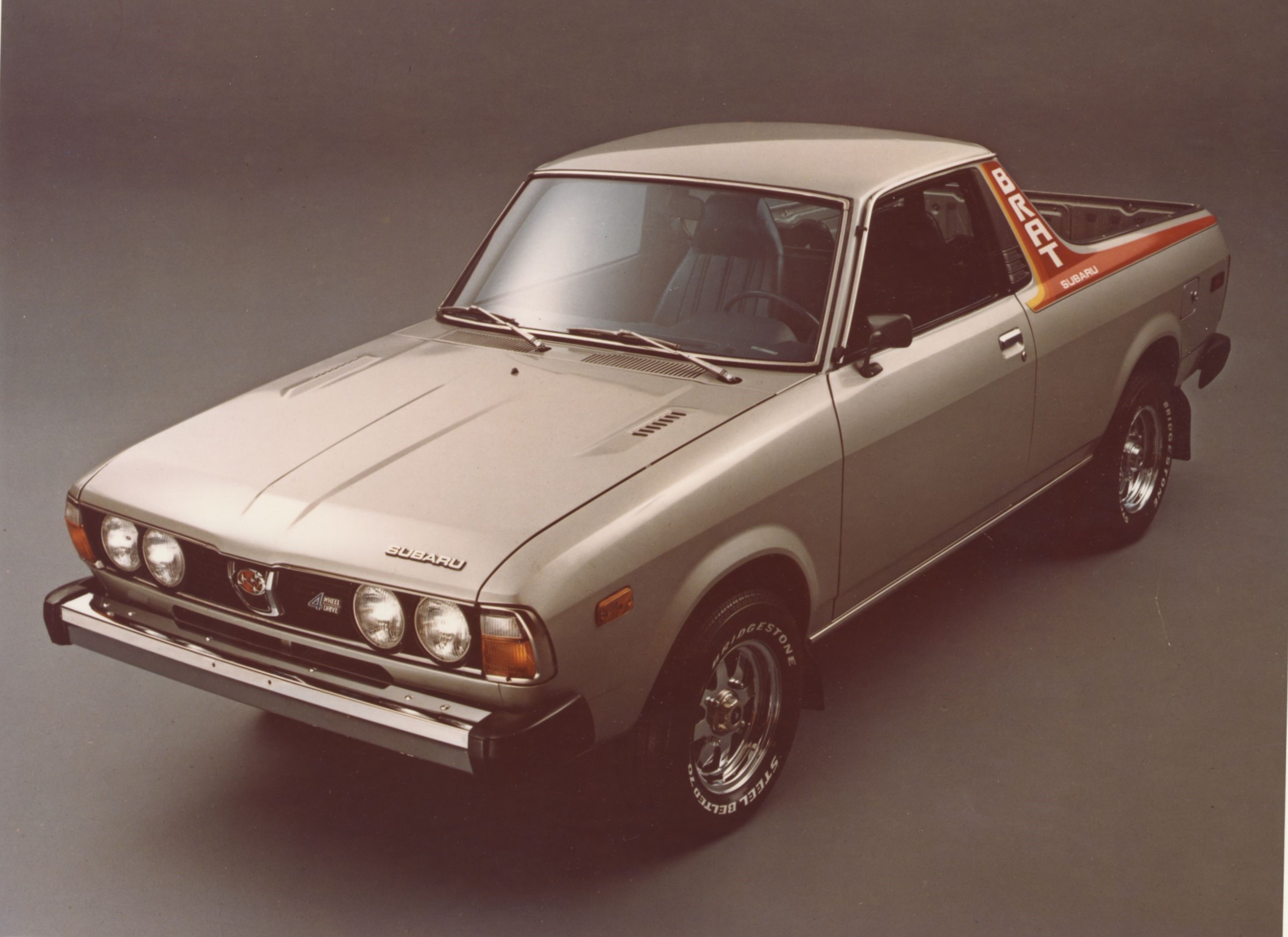
BRAT
Production: 1978-87
BRAT, which stands for Bi-drive Recreational All-terrain Transporter, was a rough and tumble vehicle that combined the comfort of a car with the capacity of a pickup truck. Marketed as a “Fun in the Sun” vehicle, the BRAT was equipped with the same “On-Demand” 4WD as the wagon, giving drivers the capability to explore the great outdoors from the wilderness to the beach. BRAT was also a favorite of President Ronald Reagan, who drove one on his ranch.
Subaru BRAT
- Production: 1978-1987
- Marketed as a “Fun in the Sun” vehicle
- Equipped with the same “On-Demand” 4WD as the wagon
- Three trim levels were available: the DL, GL and Turbo GL-10 (for certain years)
- President Ronald Reagan owned a 1978 BRAT
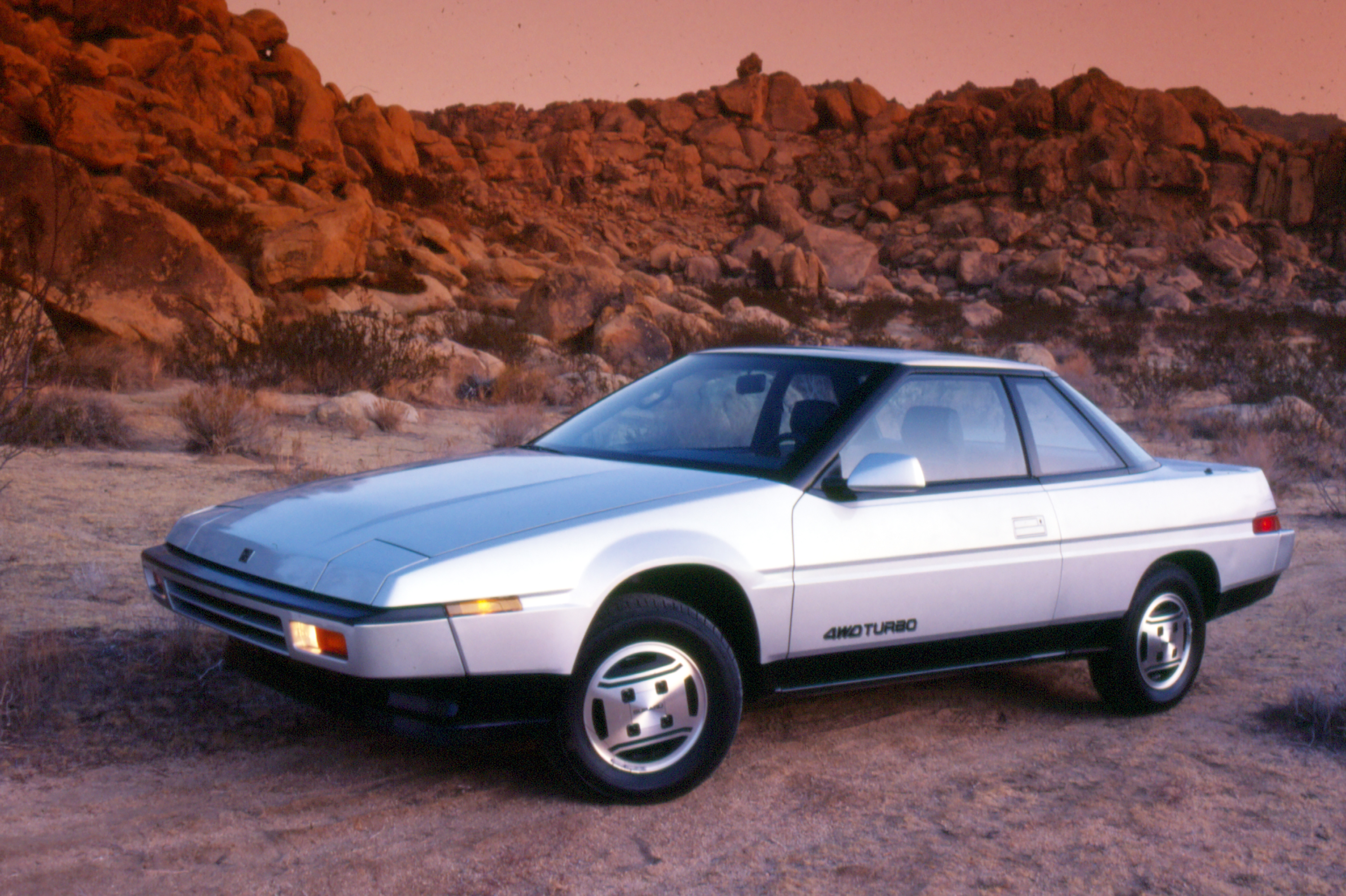
XT
Production: 1985-1991
The XT coupe was a bold departure from traditional Subaru design. The wedge-shape and digital dash display made it one of the most futuristic looking cars on the market when it debuted in 1984. The XT had an incredibly low drag coefficient of just .29, which made it one of the most aerodynamic production cars in the world. The XT was known as the Alcyone in Japan – the name referring to the brightest star of the Pleiades star cluster.
Subaru XT
- Production: 1985-1991
- Available in three trim levels: DL, GL, and the top-of-the-line GL-10
- Powered by 1.8-liter BOXER engine with 94 hp. and 101 lb-ft. of torque
- Top-of-the-line XT6 model was introduced in 1990 with 2.7-liter, 6-cylinder BOXER engine that produced 145 hp. and 156 lb-ft. of torque
- Equipped with Cybrid Power Steering, a unique electric motor power steering system
- The lowest coefficient of drag of any production car at .29
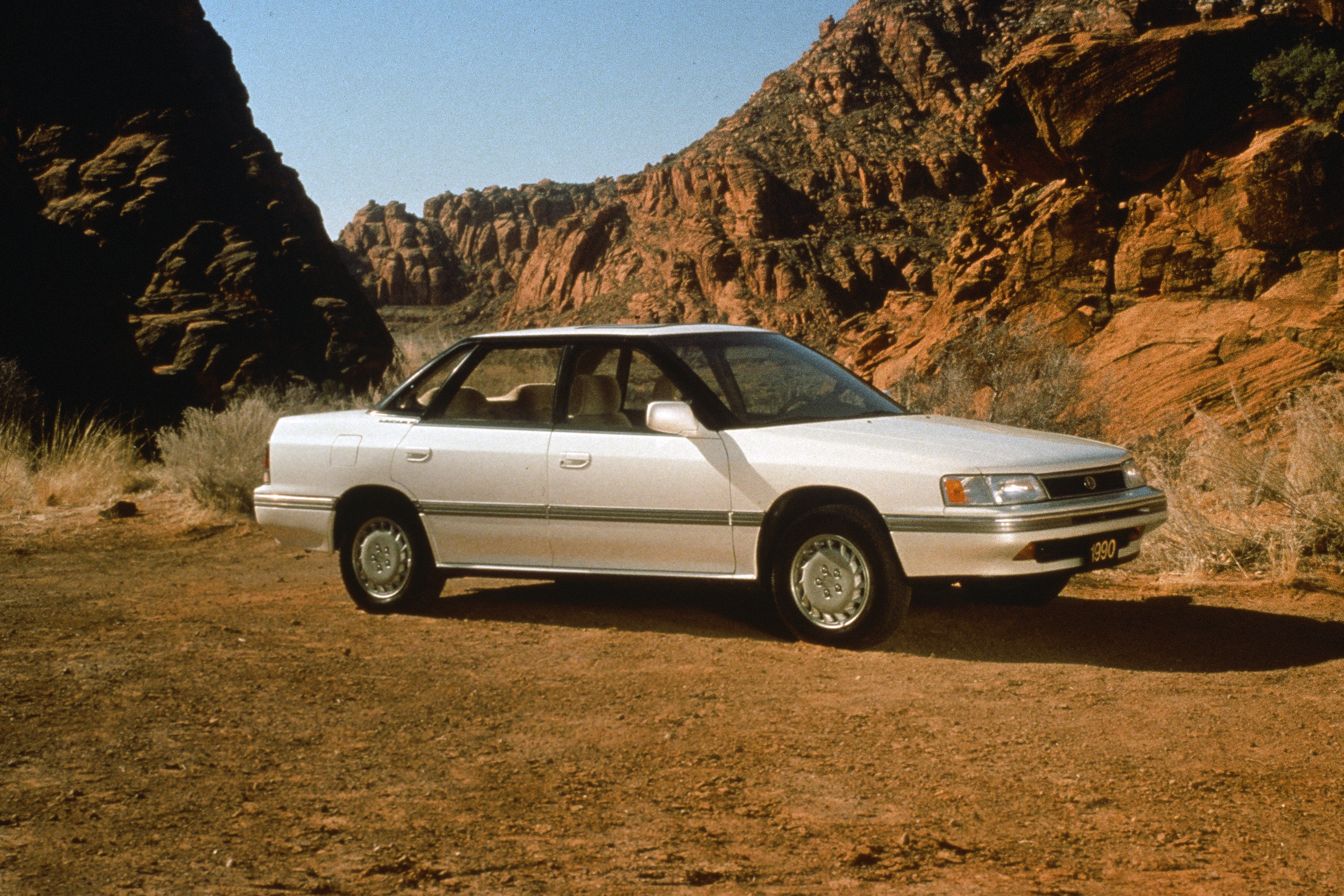
Legacy
Production: 1990-Present
The first generation Legacy ushered in a new era for Subaru with a competitive mid-sized family car with sleek styling, premium comfort and advanced standard features such as multi-point fuel injection, four-wheel disc brakes and four-wheel independent suspension. Legacy offered both Active and Continuous Full-Time 4WD and was powered by a standard 2.2-liter BOXER engine delivering 130 hp and 137 lb-ft. of torque, which outperformed many of the leading competitors in its segment.
Subaru Legacy
- Production: 1990-Present
- Powered by a 2.2-liter BOXER engine with 130 hp. and 137 lb-ft. of torque
- First model to relocate the spare tire from the engine compartment to the trunk
- Available in standard, L or LS trim levels in either sedan or wagon
- 5-speed manual and “Hill Holder” was standard
- Four-wheel disc brakes and multi-point fuel injection were also standard equipment

SVX
Production: 1992-1997
With Italian design and Japanese engineering, the SVX was the boldest Subaru model to date. The space-age performance coupe was designed by Giorgetto Giugiaro and powered by a 230 hp, 6-cylinder BOXER engine. The cockpit was surrounded by a unique window-within-a-window canopy that gave the driver unobstructed vision and virtually eliminated wind noise when the windows were down. The SVX was both a tribute to Subaru’s aviation heritage and an exercise in progressive design.
Subaru SVX
- Production: 1992-1997
- Designed by Giorgetto Giugiaro
- Classified as a luxury performance coupe
- Powered by a 3.3 liter, 6-cylinder BOXER engine with 230 hp. and 228 lb-ft. of torque
- Available as either a front-wheel drive or all-wheel drive
- The window-within-a-window design virtually eliminated wind noise when the windows were down at speed
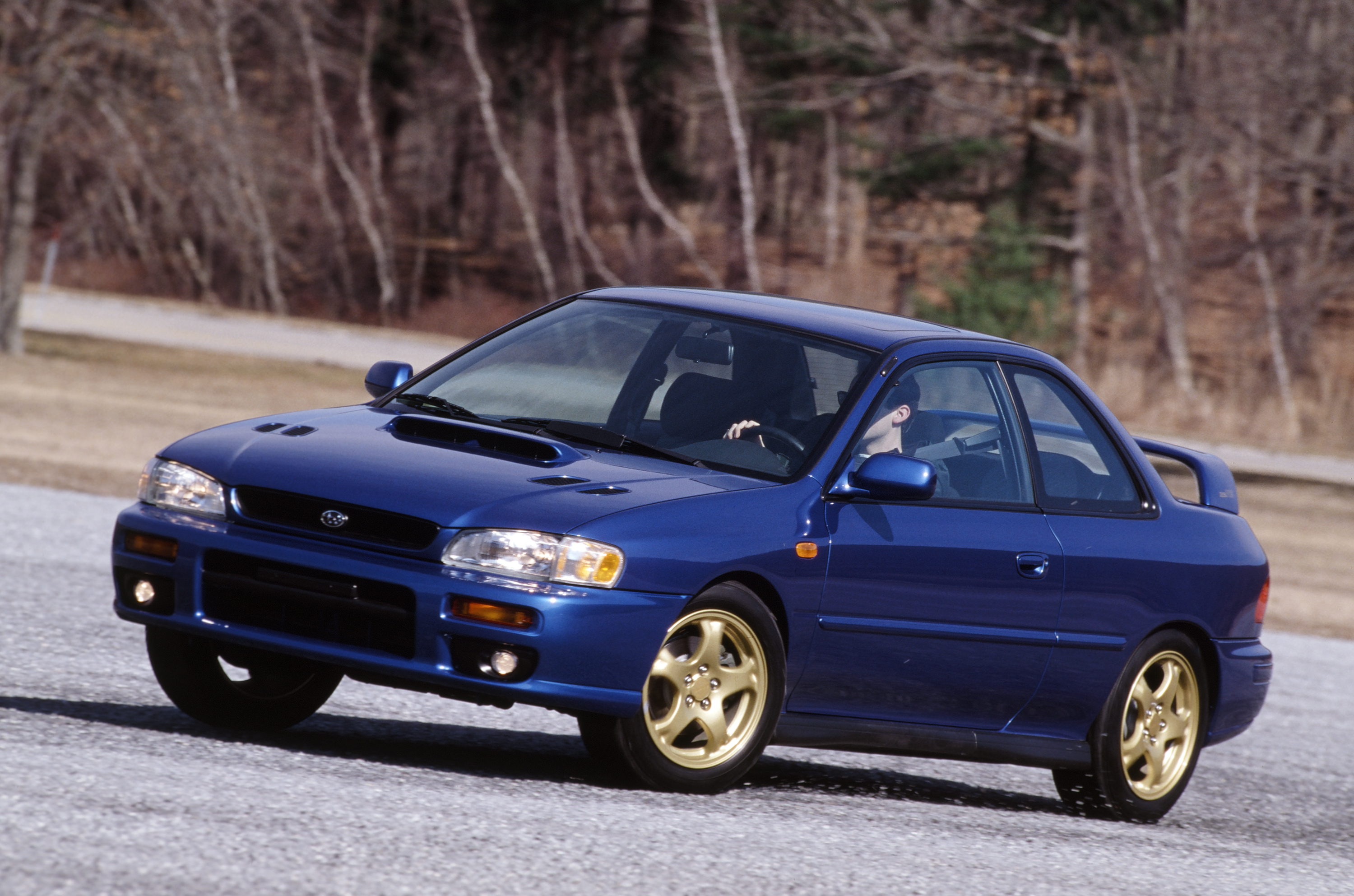
Impreza
1993-Present
Introduced in 1993, the Impreza was a big step forward for Subaru in the sub-compact car segment. The all-new model offered more horsepower and torque, greater interior room and a longer list of standard features than its leading competitors. Impreza was the second model in the Subaru line-up with advanced standard features such as multi-point fuel injection and four-wheel independent suspension. The Impreza was powered by a standard 1.8-liter BOXER engine producing 110 hp and 110 lb-ft. of torque and offered Active and Continuous All-wheel Drive. The sporty 2.5 RS, the only generation Impreza ever offered as a coupe, set a precedent for development of the legendary WRX. The 2017 Impreza is the latest model from Subaru.
Subaru Impreza
- Production: 1993-Present
- Powered by a 1.8-liter BOXER engine producing 110 hp and 110 lb-ft. of torque
- Available Continuous AWD for manual and Active AWD for automatic
- Available in standard, L or LS trim levels in either 4-Door Sedan or Wagon
- Driver-side airbag was standard
- First generation was only Impreza ever offered as a coupe

Outback
1996-Present
The Outback is Subaru’s flagship model known world-over as the “World’s First Sports Utility Wagon.” What started out as a trim level for the Legacy wagon became a cultural icon synonymous with outdoor adventure. Equipped with a 2.5-liter BOXER engine and symmetrical all-wheel drive and offering 7.5” of ground clearance, the Outback was capable of taking drivers places competitors could only dream. The first generation Outback is immediately recognizable by its two-tone paint, high ground clearance and a raised roof. The Outback won Motor Trend’s SUV of the Year for 2010.
Subaru Outback
- Production: 1996-Present
- The Outback was introduced in 1995 as a trim level on the Legacy
- 1996 was the first year the Outback became its own model line
- Equipped with a 2.5-liter BOXER engine and symmetrical all-wheel drive
- All models received two-tone paint, raised ground clearance and a raised roof
- Tagline was “World’s First Sports Utility Wagon”
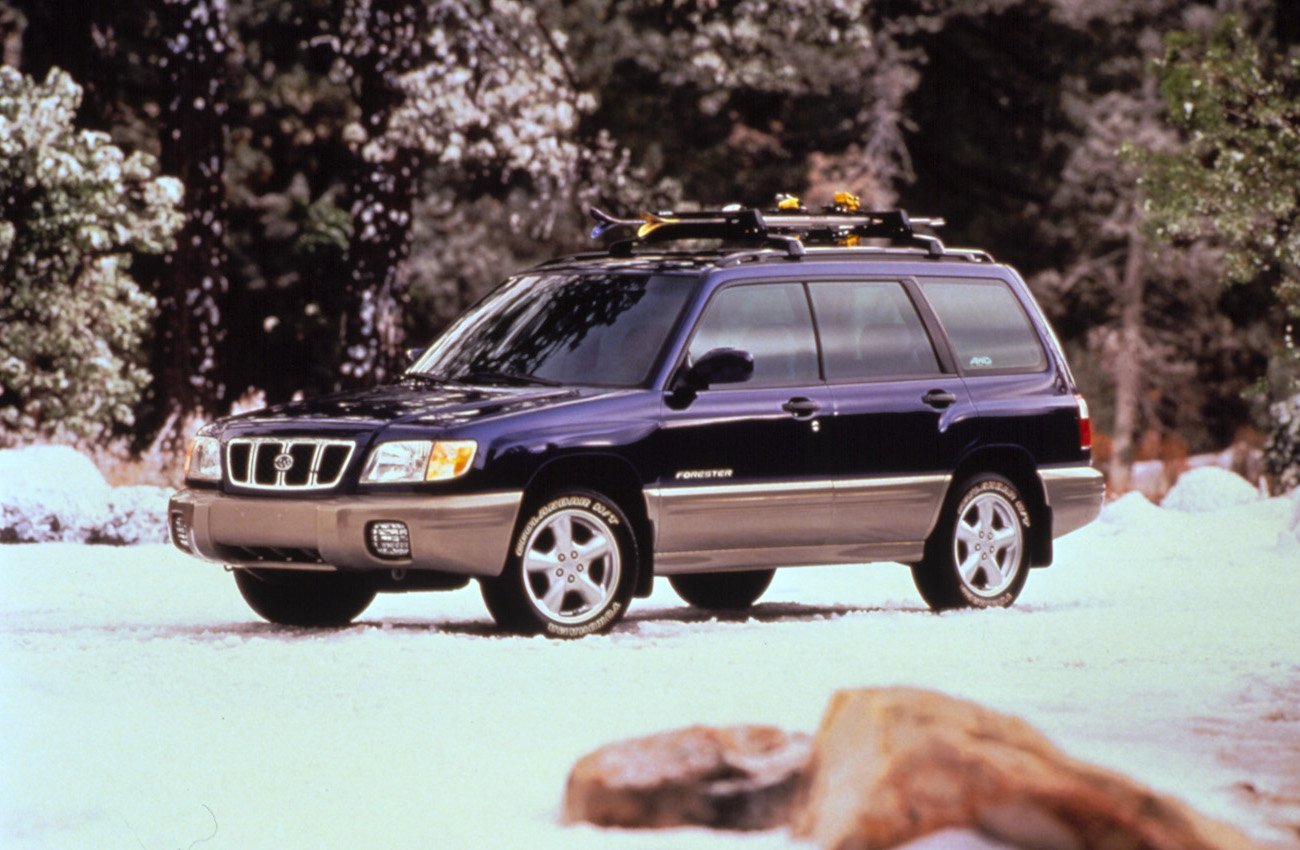
Forester
1998-Present
Known for its large capacity with a small footprint, the Forester was added to the Subaru line-up in 1998. The Forester was an alternative for customers who wanted the same performance and versatility as the Outback, but in a smaller vehicle. The Forester came standard with many of the same features as its larger counterpart including a 2.5-liter BOXER engine, symmetrical all-wheel drive and 7.5” of ground clearance. The Forester was marketed with the advertising tagline “Sport Utility Tough, Car Easy.” The Forester won Motor Trend’s SUV of the Year in 2009 and 2014.
Forester
- Production: 1998-Present
- Based on the Impreza chassis with the 2.5-liter BOXER engine from the Legacy and Outback models
- The original trim levels were standard, L, and S
- Forester came standard with roof rails
- Ground Clearance was 7.5″
- Subaru advertising employed the slogan “Sport Utility Tough, Car Easy”
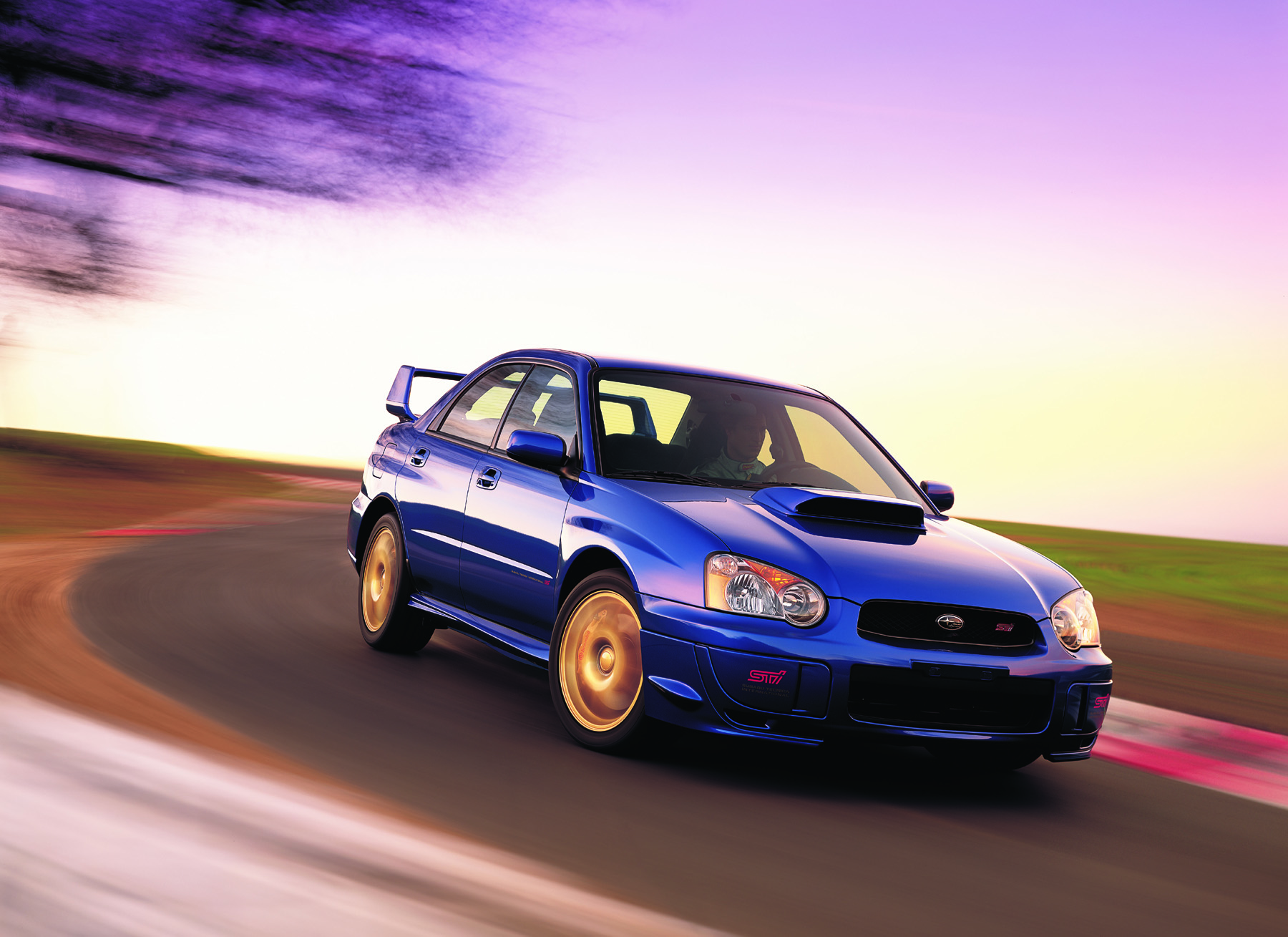
WRX
2002-Present
The rally-inspired WRX debuted in 2001 powered by a mighty 2.0-liter, turbo-charged, intercooled BOXER engine with 227 hp and 217 lb-ft. of torque, establishing the performance sport sedan segment in the U.S. market. The WRX was designed, tested and proven in its rally form in the world’s most brutal motorsport, the World Rally Championship. WRX stands for “World Rally eXperimental” and the car has lived up to its name with multiple titles in the WRC and U.S. rally competition. In 2004, Subaru introduced the WRX STI (Subaru Tecnica International) version of the WRX with a powerful 300 hp engine and signature trunk wing.
Subaru WRX
- Production: 2002-Present
- Introduced at the NAIAS in 2001 as part of the Impreza full redesign for 2002
- WRX stands for “World Rally eXperimental”
- Powered by a 2.0-liter, turbo-charged, intercooled BOXER engine with 227 hp. and 217 lb-ft. of torque
- In 2004, the WRX STI (Subaru Tecnica International) version of the WRX was introduced
- Established the performance sport sedan segment in the U.S. market.
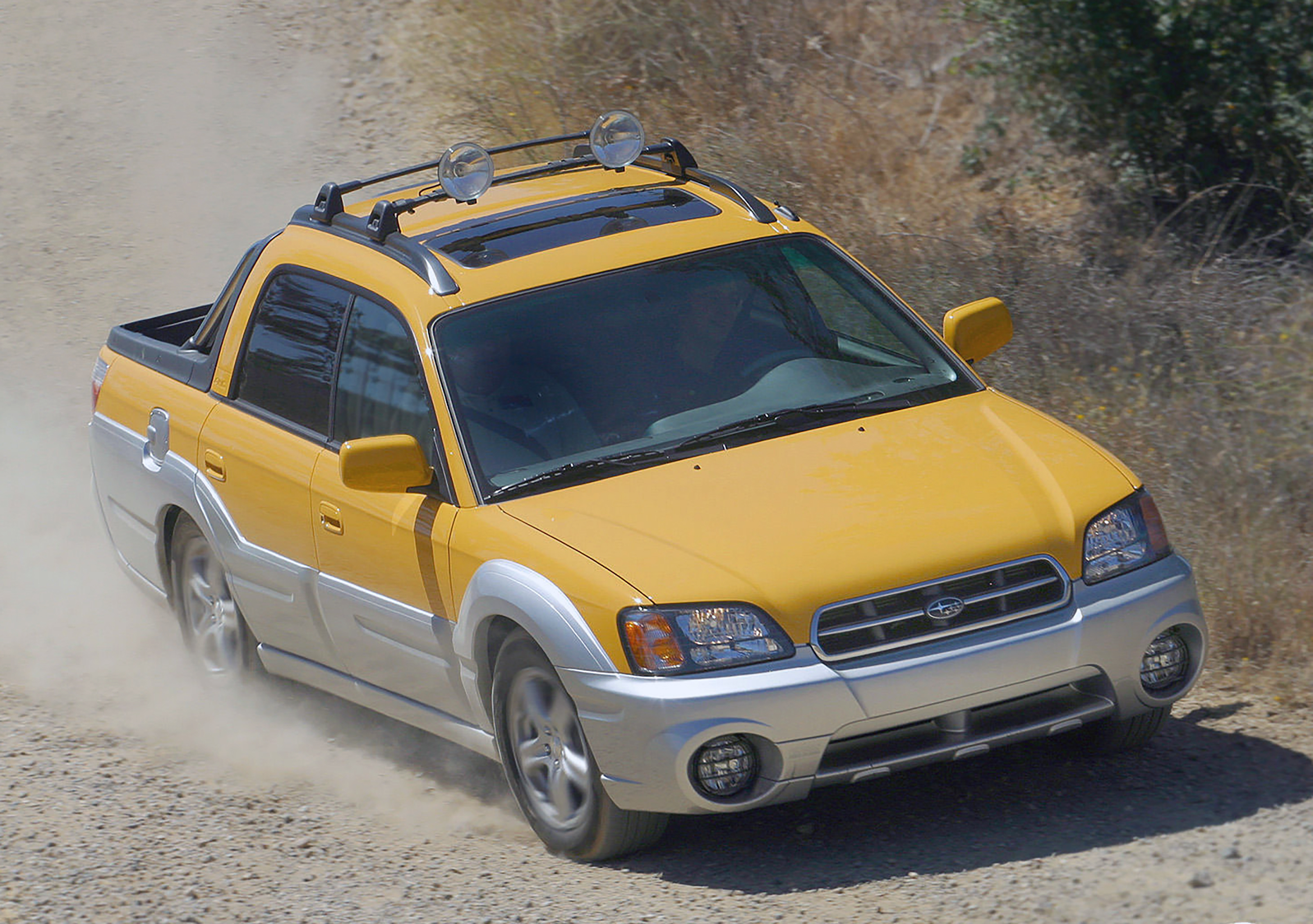
Baja
2003-06
The Baja was introduced in 2003 as a new type of crossover that blended the versatility and ruggedness of a compact 4-door pickup truck with the driving dynamics, safety and comfort of a passenger car. The Baja was equipped with Subaru’s 2.5-liter BOXER engine and symmetrical all-wheel drive as well as the added benefit of a limited-slip rear differential and a fully independent heavy-duty raised suspension. The multi-purpose vehicle had room for four passengers and a cargo bed for occasional sport and/or utility use. The key to the Baja’s versatility was the Subaru-designed Switchback System that allowed the reconfiguration of the rear seating area, as well as the cargo bed, to meet a variety of needs. Based on the Legacy-Outback platform, the Baja was the first model designed in-house by Subaru of America.
Subaru Baja
- Production: 2003-06
- Built at SIA in Lafayette, Indiana
- The Baja was introduced in 2003 as a multi-purpose vehicle with room for four passengers and a cargo bed for occasional sport and/or utility use
- It was based on the Legacy-Outback platform
- The first model designed in-house by Subaru of America.
- Tagline was “World’s First Multiple Choice Vehicle”
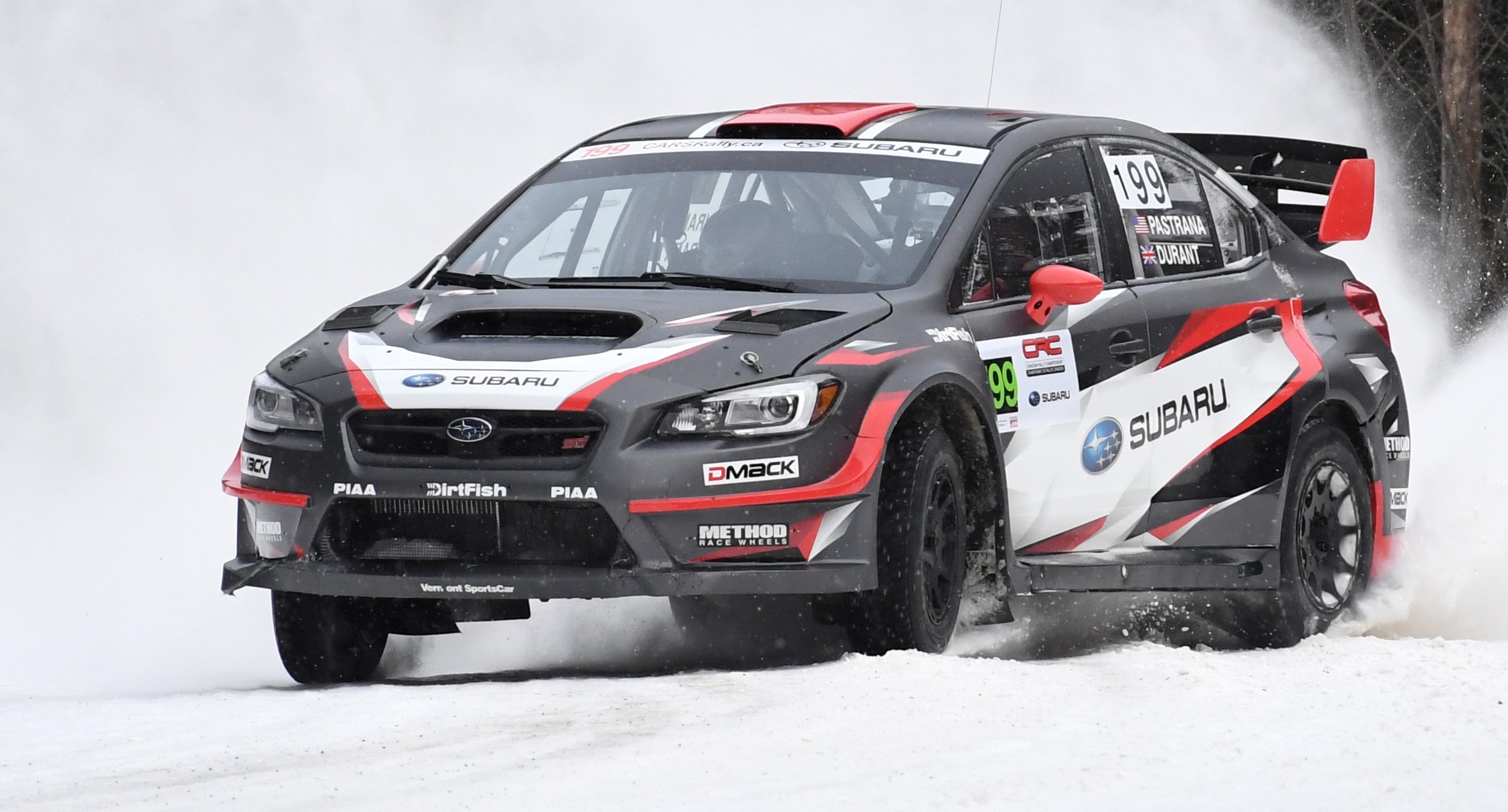
Subaru and Motorsport
The Subaru brand has long been associated with motorsport and in particular rally, a motorsport that highlights the Subaru Symmetrical All-Wheel Drive system, used in most Subaru production models. A Subaru team from STI (Subaru Tecnica International), first competed in the World Rally Championship (WRC) in 1981. In 1990, Subaru ran a Legacy in WRC and from 1993 the smaller Impreza took over. Subaru won the WRC manufacturers’ championship three times; in 1995, 1996, and 1997, and the drivers’ championship three times; in 1995, 2001, and 2003.
In the US, with the introduction of WRX in 2001, Subaru created Subaru Rally Team USA to compete in US rally racing. The team is run by factory technical partner Vermont SportsCar. Subaru Rally Team USA primarily competes in stage rally events and the Red Bull Global Rallycross Championship. The team also competes occasionally in the Canadian Rally Championship, the X Games, hill climb events, and the World Rally Championship.
Well-known racing and action sports personalities have represented Subaru Rally Team USA such as Travis Pastrana, Bucky Lasek, Ken Block, plus legends Dave Mirra and Colin McRae in rally, rallycross, and the X Games.
For rally racing, the combination of Subaru technology and the skill of veteran drivers Travis Pastrana and David Higgins has produced one of the most successful factory motorsports programs in the USA, where Subaru has won the Rally America Manufacturer’s Championship title ten times in the last eleven seasons. Travis Pastrana lead the championship for Subaru from 2006-2009, while David Higgins has claimed six consecutive championship titles from 2011-2016. In 2014, David Higgins set a new record of 6:09.09 at the Subaru Mt. Washington Climb to the Clouds hill climb. SRTUSA and Higgins would go on to break another record in 2015, by winning every round of the 2015 Rally America National Championship with the 2015 WRX STI VT15r rally car, a record that had stood since 1987.
From 2013, SOA also developed the record-setting Isle of Man TT cars, driven by Mark Higgins brother of David, which set 4-wheel speed records on the famous TT Bike circuit.
For 2017, the factory team will compete in the new American Rally Association Championship with David Higgins and Travis Pastrana as lead drivers, and the Red Bull Global Rallycross Championship with Chris Atkinson and Patrik Sandell as lead drivers. Higgins and Pastrana will also compete in the 2017 Subaru Mt. Washington Climb to the Clouds hill climb.
Subaru Philanthropy
Subaru of America has long been known as a company that supports good causes and partners with like-minded organizations. SOA created the Subaru of America Foundation in 1984 to support its local communities and since then, more than $9 million has been awarded through grants, scholarships, and matching employee gifts. The programs are varied but primarily benefit the unemployed and underemployed in communities local to Subaru facilities.
During the end-of-year Share the Love event, for every new vehicle purchased or leased, Subaru donates $250 to the customer’s choice of pre-selected national or “hometown” local charities. Between 2008-2016, Subaru and its retailers donated nearly $90 million to honorable causes through Share the Love events, including:
- Subaru has funded the rescue, transport, and adoption of nearly 30,000 animals across the country through the ASPCA.
- Subaru has helped Make-A-Wish grant more than 1,200 wishes.
- Subaru helped deliver nearly 1.44 million meals to America’s seniors.
- Subaru has provided funding to the National Park Foundation for vital programs and projects in more than 100 national parks.
Subaru Marketing
Subaru, known today for its highly successful “Love” marketing campaign, has pathed a varied route in its advertising journey. Far removed from today’s successful “Love” positioning, one of the company’s first ads was, “The Subaru is not a Japanese Beetle.” Recognizing the need to set itself apart from other foreign carmakers, a second early ad called Subaru “The economy car for Today’s Economy” which was appropriate as other importers such as Volkswagen were raising prices. An iconic ad for the 360 was headlined “Cheap and Ugly Does It” and another early ad tagline proclaimed that Subaru vehicles were “Inexpensive and Built to Stay That Way.”
Through the 1970s, the public perceived Subaru cars as inexpensive to buy and cheap to own. While this was good for initial sales, the company soon needed a stronger, more compelling reason for a wider group of consumers to buy.
In 1975, Subaru introduced four-wheel drive and this allowed the company to strengthen its position as a ‘snow’ car and to capitalize on that, Subaru of America sponsored the US Ski Team and used ads showing a Subaru vehicle taking the team up a snow- and ice-covered mountain.
During the 1990s, celebrities such as Paul Hogan were employed to raise awareness of the brand (specifically the Outback in Hogan’s case). During this period, awareness for the Outback model was strong, often eclipsing awareness for the Subaru brand. Over a short period of time, various taglines were used as the company searched for its identity, such as: “What to Drive“, “The Beauty of All-Wheel Drive“, “Driven by What’s Inside“, and “Think, Feel, Drive“.
During this period, Subaru noted its following amongst lesbian car buyers and produced ground-breaking ads aimed at the lesbian market. The automaker also featured gay tennis star Martina Navratilova in its national advertising.
However, despite meaningful awareness for the Outback and Forester models, the brand was still lacking a firm identity with the public. In the mid 2000’s, this identity was pinpointed by Subaru of America and current agency of record Carmichael Lynch through an insight into the love that Subaru owners have for their vehicles. At this time, Subaru vehicles were purchased by a core group of loyal owners who often expressed their strong affection and devotion to the brand. This insight evolved into the highly-acclaimed Love campaign, with its tagline, “Love. It’s what makes Subaru, a Subaru”.
The Love campaign emphasizes real-life situations and the emotional engagement of people with life, family, pets and their vehicle while underscoring the inherent safety, versatility and adventuresome nature of Subaru vehicles. This campaign strongly resonates with buyers and has been the recipient of many marketing awards and has formed into the ‘true identity’ of the Subaru brand and the long-lived positioning has represented the brand from 2008 to the present day.
U.S. Sales History
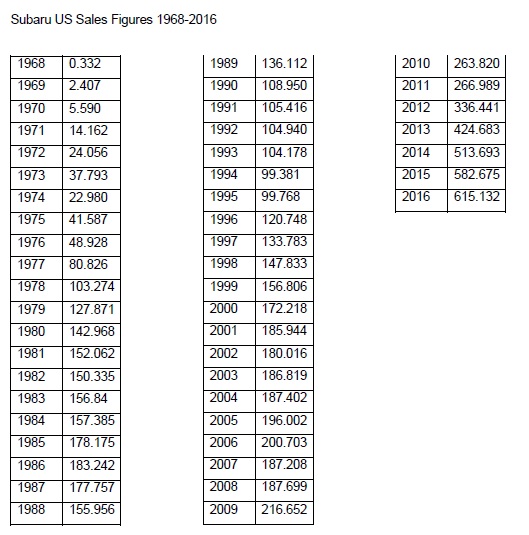
Subaru of America, Inc. Corporate Timeline
2012
• Subaru announces an all-time record breaking sales year as the company sells 266,989 units in 2011, an increase of 1.2-percent from the previous year. Subaru is the only manufacturer in the US to post four years of successive sales growth.
2011
• Subaru introduces the redesigned 2012 Impreza 4-dr and 5-dr models, the most fuel-efficient all-wheel drive vehicle in the United States.
• Subaru reveals the anticipated BRZ at the Tokyo Motor Show.
• Subaru announces a record breaking sales year as the company sells 263,820 units in 2010, an increase of 1.5-percent from the previous year. Subaru is the only manufacturer in the US to post three years of successive sales growth.
• Subaru Rally Team USA Driver David Higgins wins the 2011 Rally America Championship
2010
• Subaru introduces the 2011 Impreza WRX models with new wide-body designs and the new 4-door Impreza WRX STI model for 2011 at the 2010 New York International Auto Show. The STI will now be available in two body styles.
• Subaru launches the “Get more G’s” ad campaign for the 2011 WRX and STI
2009
• Subaru reveals the all-new 2010 Subaru Legacy and all-new fourth generation Subaru Outback at the 2009 New York International Auto Show.
• Subaru showcases the Subaru Legacy Concept vehicle at the 2009 North
American International Auto Show.
• Subaru announces a record breaking sales year as the company sells 216,652 units in 2009, an increase of 15-percent from the previous year.
2008
• Subaru reveals the all-new, third generation 2009 Forester at the 2008 North American International Auto Show.
• Subaru showcases the R1e electric car at the New York International Auto show
• Subaru launches the “Love” marketing campaign.
• Subaru introduces the new 2009 Subaru Impreza 2.5 GT and performance-enhanced 2009 Subaru Impreza WRX
2007
• Subaru unveils redesigned 2008 Legacy and Outback at the 2007 North American International Auto Show.
• Subaru unveils the redesigned, newly named 2008 Subaru Tribeca and debuts Tribeca’s new 3.6-liter H6 engine at the New York International Auto Show.
• Subaru debuts all-new 2008 Impreza 2.5i and WRX at the New York International Auto Show.
• Subaru names Minneapolis-based Carmichael Lynch, advertising agency of record.
2006
• Subaru showcases the B5-TPH, a hybrid concept vehicle, at the North American International Auto Show.
• Subaru reveals the 2007 B9 Tribeca Special Edition at the Chicago Auto Show
• Subaru introduces “It’s What Makes a Subaru, A Subaru” advertising campaign and tagline.
• Subaru unveils the 2007 Legacy 2.5 GT spec.B performance sedan and 2007 Impreza WRX STI Limited model at the New York International Auto Show.
• Subaru Intelligent Drive (SI-Drive) also makes its debut on all 2007 turbo models. This key new technology enhances driving engagement by allowing the driver to select the level of engine performance.
2005
• Subaru introduces the B9 Tribeca at the North American International Auto Show in Detroit, Subaru’s first seven passenger vehicle.
• Subaru launches “Think.Feel.Drive.” advertising campaign and tagline.
• Subaru introduces the 2006 Forester with refreshed exterior styling at the New York Auto Show.
• Subaru introduces redesigned 2006 Subaru Impreza model line.
2004
• Subaru showcases two alternate-propulsion concept vehicles at the North American International Auto Show.
• Subaru introduces the turbocharged Legacy 2.5GT at the North American International Auto Show.
• Subaru introduces the third-generation, fully redesigned, re-engineered Outback models line at the Chicago Auto Show.
• Subaru unveils all-new Forester 2.5XS L.L. Bean Edition at the New York Auto Show.
• Subaru partners with National Brotherhood of Skiers, becomes official vehicle and sponsor of the Subaru Driven by What’s Inside Athlete of the Year Award.
• Subaru named official vehicle in partnership with the National Gardening Association.
• Subaru names New York-based DDB New York, advertising agency of record.
2003
• Subaru of America, Inc. introduces Baja Turbo, a third version and higher-performance version of the Subaru Baja at the New York Auto Show.
• Subaru of America, Inc. introduces Forester 2.5 XT, a new higher-performance version of its popular Forester sport-utility vehicle at the Chicago Auto Show.
• Subaru introduces the 2004 Impreza WRX STI at the North American International Auto Show.
• Subaru introduces Baja Sport, a second version and more stripped down version of the Crossover Vehicle at the Los Angeles Auto Show.
• Subaru B11S concept car makes world premiere at the International Geneva Auto Show.
• Subaru signs Lance Armstrong as advertising spokesperson and launches “Driven by What’s Inside” advertising campaign and tagline.
• Subaru Rally Team USA loses driver Mark Lovell and co-driver Roger Freeman in tragic rally accident.
• Subaru partners with Nordica USA to enhance Subaru Master the Mountain program.
• Subaru introduces performance parts line including Subaru Technica International (STI) and Subaru Performance Tuning (SPT) to the public.
• Subaru records unit sales of 186,819; making 2003 the best sales year ever.
• 2003 was the most financially successful in the company’s history; revenue reached $4.2 billion, an all-time record.
2002
• Subaru introduces all new- Baja crossover vehicle at the North American International Auto Show.
• Subaru unveils fully redesigned Forester at the Chicago Auto Show.
• Subaru realigns and refines Legacy model line for 2003.
• Subaru Outback gets refreshed styling and offers Onstar.
• Subaru launches 2003 Baja Micro-site.
• Subaru launches “When You Get it, You Get it” advertising campaign.
• Subaru becomes the title sponsor of the Subaru Primal Quest adventure race and forms the Subaru Adventure Race Team.
• Subaru of America, Inc. recorded sales of 180,020 units and revenue of $4.1 billion.
2001
• Subaru unveils the all new Impreza WRX Sedan and Sport Wagon at the North American International Auto Show.
• Subaru debuts Outback H6-3.0 VDC Sedan at the New York Auto Show.
• Subaru introduces the Subaru Rally Team USA at the New York Auto Show.
• Subaru forges partnership with Sports Car Club of America.
• Subaru launches “Driving Performance” ad campaign for the WRX
• Subaru forms partnership with Gary Fisher Bicycles, primary sponsors of the Subaru Gary Fisher Mountain Bike Racing Team.
• Subaru Rally Team USA captures the 2001 SCCA ProRally Overall Manufacture’s Champion Title.
• Subaru announces production of a vehicle based on the ST-X concept car.
• Subaru launches new “Driving Performance” ad campaign for the WRX.
• Subaru of America, Inc. partners with Gary Fisher Bicycles and becomes the primary sponsor of the Subaru Gary Fisher Mountain Bike Racing Team.
• Subaru Rally Team USA captures the 2001 SCCA ProRally Overall Manufacturer’s Champion title.
• Subaru announces production of a vehicle based on the ST-X concept car.
• Subaru records unit sales of 185,944; making 2001 the best sales year ever.
• 2001 was the most financially successful in the company’s history; revenue reached $4.2 billion, an all-time record.
2000
• Subaru unveils the ST-X concept car in January at the Los Angeles Auto Show.
• Subaru introduces the redesigned 2001 model year Forester in January at the NAIAS in Detroit. The models arrive in dealerships in summer 2000.
• Subaru becomes official car of the LPGA.
• Subaru sponsors Philadelphia’s National Liberty Museum.
• Subaru and L.L. Bean form marketing partnership.
• Subaru introduces L.L. Bean H6 Special Edition Outback and H6 VDC Outback in April at the New York Auto Show. The models arrive in October 2000.
• Subaru of America debuts the ‘What do I Know’ advertising campaign, featuring Martina Navratilova.
• Subaru and Specialized bicycles form partnership.
• The 2000 model year Subaru Legacy earns highest rating in its class in the IIHS high-speed crash test.
• Subaru sponsors a variety of activities for the Republican National Convention.
• Subaru announces production of a vehicle based on the ST-X concept car.
• Subaru records unit sales of 172,216; making 2000 the best total sales year since 1987.
• 2000 was the most financially successful in the company’s history; revenue reached $3.7 billion, an all-time record.
1999
• Subaru introduces the redesigned Outback and Outback Sedan in January at the NAIAS in Detroit. The models arrive in dealerships in July.
• Subaru introduces the Legacy GT sedan and wagon at the New York International Auto Show in March. The models arrive in dealerships in July.
• Subaru donates the full use of 30 cars to not-for-profit organizations in the Greater Philadelphia Area.
• Subaru of America, Inc. sponsors of VH1 Save the Music.
• Subaru becomes the title sponsor of the Subaru Memorial of Naples-an LPGA tour event.
• Subaru becomes official sponsor of newly formed Masters Rowing Association and Fischer Salomon Subaru Factory Cross Country Ski Team.
• Subaru records unit sales of 156,806, making 1999 the best total sales year since 1988.
• Subaru has most successful year in the company’s history; revenue reached an all-time record of $3.3 billion.
• The Financial Times Automotive Magazine names Subaru the “Most Improved Car Company in the World.”
1998
• Subaru introduces Legacy Sport Utility Sedan at the North American International Auto Show.
• Subaru celebrates 30 years in the US (2-15-98).
• Subaru joins National Low Emission Vehicle Program (1999MY).
• Subaru sells 3 millionth Subaru vehicle in US. (3-16-98).
• Subaru becomes the official car of the American Association of Snowboard Instructors.
• 1999 Subaru Legacy SUS wins “Rally of Lost Patrol.”
• Subaru and Specialized team up to sponsor “Subaru Women’s Mountain Biking Clinics”
• Subaru donates “30 cars to 30 causes” to support local not-for-profit organizations that surround the company’s corporate headquarters in the greater Philadelphia area.
• Subaru and HEAD USA team up to sponsor Women’s Ski Clinics.
• Subaru Forester is the only vehicle to receive a “good” rating among ten small SUVs tested by the Insurance Institute for Highway Safety.
• Subaru and Panoz Motorsports unite to create the Subaru-Panoz Performance Driving School at Road Atlanta.
• The company records unit sales of 147,833 and topped $3 billion in revenue for the first time in its history.
1997
• Subaru introduces the new 98 MY models: the all-new Forester hybrid utility vehicle and the rally-inspired Impreza 2.5 RS 2-Door Coupe.
• Subaru’s 11 percent sales increase over ’96 CY, leads industry with a two-year sales growth of + 31 percent.
• Subaru posts best financial performance in its 29-year history.
• Subaru becomes best-selling wagon – import or domestic – for second consecutive year.
• Subaru recognized for creating best dealer attitude in its history, according to NADA.
• Subaru enters into a partnership with the National Forest Foundation that will improve conservation efforts in our nation’s forests.
• The company launches its Loyalty MasterCard Program–available exclusively from MBNA America Bank—the only card that rewards customers with discount points to be applied toward the purchase or lease of a new Subaru vehicle.
• Subaru joins the world of professional golf as the first-ever title sponsor of the 1997 Subaru Sarazen World Open.
1996
• Subaru records fourteen consecutive months of sales increases.
• Subaru posts the largest year-over-year sales increase among all car companies with annual sales over 100,000 units.
• Subaru total sales up 20.3 percent over 1995 while the industry average decreased 1.2 percent.
• Subaru posts best retail year since 1988 and largest year-over-year retail since 1979.
• Subaru posts its third consecutive year of retail sales increases.
• Subaru introduces the new ’97 MY models: the Outback Impreza Sport and Outback Limited.
• In October, Subaru launches the official Web site of Subaru of America, Inc., subaru.com.
• Subaru enters new marketing partnerships with Specialized Bicycle Components and the International Mountain Biking Association (IMBA) and is designated the “Official Car” of both organizations.
• Subaru sells its 5,000th Right-Hand Drive Subaru Legacy Wagon.
• For the third consecutive year, a leading consumer products review magazine has rated 100 percent Subaru models as “Recommended”. For 1996, the only other manufacturers to earn this distinction were Lexus, Infiniti and Volvo.
• Subaru Legacy earned the distinction of the best-selling wagon in America. (Based on The Polk Company retail registration statistics as of 12/31/96.)
1995
• Subaru posts its second consecutive year of retail sales increases.
• For the first time ever, Subaru Legacy Wagon outsells the Ford Taurus Wagon and become the best selling wagon in its class.
• Subaru introduces two new ’96 MY models: The sporty Legacy 2.5 GT and the Outback – “The World’s First Sport Utility Wagon.”
• In July, Subaru engine assembly operations begin a U.S. joint-venture manufacturing plant, Subaru-Isuzu Automotive, Inc., (SIA), Lafayette, Ind.
• For the first time, 100 percent of the Legacy models sold in North America were built in the U.S.
• Subaru begins new partnerships with the National Ski Patrol and the Professional Ski Instructors of America and ends its 20-year association as the “Official Car” of the U.S. Ski Team.
• Subaru develops several cross-functional management teams to address issues such as claims, vehicle delivery, and customer and dealer strategies.
1994
• Subaru names Dallas-based Temerlin McClain, advertising agency of record.
• In July, Subaru introduces the all-new Legacy (MY 95) to the U.S. market following the car’s tremendous success in Japan.
• Subaru begins U.S. production of the Legacy (MY 95) in late March.
• In August, Subaru introduces the Impreza Coupe (MY 95) – designed and produced exclusively for the American market.
• Subaru introduces the Limited Edition Outback Wagon (MY 95), a new version of the Legacy station wagon.
• Subaru achieves its best retail sales year in seven years, outselling 12 other import nameplates including Mercedes, BMW, Volvo and Volkswagen.
• In August, Subaru sells its one-millionth all-wheel drive vehicle.
1993
• Subaru celebrates its 25th anniversary of selling vehicles in the U.S.
• The West Coast port of entry expands and moves from Portland, Ore. to Vancouver, Wash.
• Subaru launches an all-new subcompact – Subaru Impreza – along with limited-production of the 25th anniversary versions of Legacy and SVX models.
• All-Wheel Drive Subaru Legacy rated No. 1 in owner satisfaction in Consumer Reports 1994 Yearbook.
1991
• Subaru introduces its first performance luxury coupe, the 1992 (MY) Subaru SVX.
• Subaru markets a right-hand drive compact Legacy station wagon with all-wheel drive to U.S. rural letter carriers.
• Subaru conducts an advertising agency search and selects Portland-based Wieden & Kennedy. This was the company’s first ad agency change in 17 years.
1990
• Long-time Japanese manufacturing partner, Fuji Heavy Industries Ltd acquires Subaru of America, Inc. on Aug. 31.
1989
• In January, the Subaru Legacy sets two world and 13 international endurance and speed records.
• Subaru continues to dominate the four-wheel drive passenger car market, having more four-wheel drive registrations than all other makes combined.
• The first two vehicles built at SIA – a Subaru Legacy and Isuzu Pickup – roll off the assembly line on September 11.
1988
• The company introduces (October 1st) the Electronic Continuously Variable Transmission (ECVT) in the Subaru Justy, the only car sold in the U.S. with this feature.
1987
• Groundbreaking for construction of the SIA plant, a 2.3-million-square-foot assembly operation, begins May 14. This $500 million facility is the first joint venture between FHI and Isuzu. FHI holds 51 percent interest and Isuzu holds 49 percent interest.
• Initial plans call for production of 60,000 Subaru cars and 60,000 Isuzu trucks annually.
• The plant has three objectives: neutralize the effects of international fluctuations; offset U.S. protectionist sentiments; and provide Subaru with a major presence in the Midwest, a large market with strong sales potential for Subaru.
• Subaru introduces the US to the Justy, the first modern mini-car from a Japanese importer.
• BRAT model production for the U.S. market ceases in July.
• In June, Subaru set an all-time sales record by posting 15,000 unit sales for the month.
• For the calendar year, Subaru becomes the best retail-selling wagon, import or domestic.
1986
• Subaru sales hit $1.9 billion, an increase of 29 percent over 1985; net income increased 22 percent over 1985 levels to $94 million.
• Fuji establishes a U.S. design center adjacent to the Subaru Technical Center in Garden Grove, Calif., where Fuji personnel still work to tailor their products to American tastes.
• In its 39th annual survey of U.S. companies, Forbes ranked Subaru sixth in profitability with a 49.9 percent five-year average return on equity. SOA becomes the only company surveyed to rank in the top 10 in profitability in each of the previous eight years.
• Subaru registers more four-wheel drive passenger cars than all other makes combined.
• Subaru of America moves into its new $18 million, seven-story corporate headquarters on Route 70 in Cherry Hill, N.J., just outside Philadelphia.
• The Subaru wagon becomes the No. 1 wagon model in the U.S. with recorded 1985 owner registrations higher than any domestically made model and 30 percent more registrations than the next highest Japanese model.
• Subaru’s auto sales efforts in the U.S. face limits because of Voluntary Restraint Agreements. Japanese auto manufacturers agree to place ceilings on their exports to the U.S.
• Fuji announces an agreement with Isuzu Motors Limited to jointly construct a $500 million manufacturing and auto assembly plant near Lafayette, Ind.
• Subaru wins the Clio award for best automotive commercial for “You Always Hurt the One You Love.”
1985
• Subaru reaches its 10th consecutive year of record-setting earnings and sales; net income for the year was $77.1 million, a 28 percent increase over the previous year; record annual sales are $1.5 billion compared to the previous record of $1.18 billion set in 1984.
• Forbes ranks Subaru fourth highest in profitability in its annual survey of more than 1,000 companies.
• Customers rate Subaru the best in customer satisfaction among all Japanese and U.S. makes in J.D. Power surveys for the second consecutive year.
• Subaru unveils the XT Coupe bringing Subaru to the industry forefront of aerodynamic design.
1984
• Subaru establishes the Subaru of America Foundation (SOAF) in response to the communities’ growing social, cultural and educational needs.
• Subaru ranks No. 1 in customer satisfaction by J.D. Power surveys among all Japanese and U.S. makes. Among all autos, the only car rated higher was Mercedes Benz.
• Subaru introduces the Subaru Coupe to appeal to a more sophisticated buyer.
• The company’s earnings grow at a compound rate of 34 percent between 1980 and 1985 despite restrictions by the Japanese government on sales to. the U.S.
1983
• SOA celebrates its 15th anniversary and sells its one millionth Subaru in the U.S.
• Sales exceed $1 billion for the first time. Earnings reach record levels for the eighth consecutive year, totaling $49.5 million.
• Forbes Magazine rated Subaru of America, Inc. fourth in profitability in a survey of 1,000 U.S. companies.
• Independent survey ranks Subaru car salesmen industry’s best in product knowledge.
1982
• Subaru introduces the GL-10 Hardtop Coupe.
• The Subaru Technical Center relocates to Garden Grove, CA.
1981
• Subaru announces the formation of Subaru Financial Services, Inc., the first financial service subsidiary of an import automobile company. The subsidiary provides extended service contracts, retail automobile financing, credit insurance, and dealer inventory financing.
• Subaru car sales continues to climb 23 percent to $916 million despite Japan’s Ministry of International Trade and Industry agreement to voluntarily limit the number of automobiles exported to the U.S. for a two-year period.
1980
• Subaru celebrates its fifth consecutive fiscal year of record sales and profitability with sales reaching $744 million – a 35 percent gain – and net income of $17.7 million.
• Subaru introduces its “Hill Holder,”™ which prevents its manual transmission models from rolling backward when stopped on a hill.
• Subaru becomes the first automobile company to offer optional four-wheel drive in all car models.
• SOA introduces turbo-traction, the first 4WD turbo-charged Subaru.
1979
• Subaru’s net profit and its subsidiaries reach $10.4 million, (a 45 percent increase over the previous year), on sales of $550 million for the 1979 fiscal year.
1978
• With 335,000 Subaru vehicles on the roads, sales in replacement parts and accessories increase 130 percent.
• For its expanding parts and accessories business, Subaru plans a new 120,000 square-foot parts warehouse and distribution depot to be completed in 1979 in Carson, Calif.
• Subaru sales increase 86 percent to $440 million with a 65 percent increase in net income of $7.2 million.
• The DL four-door model is nominated as Motor Trend Magazine’s “1978 Car of the Year.”
• The Brat won the “Excellence in Engineering Award” by Off Road Magazine.
1977
• Subaru introduces the BRAT, a small dual-range 4WD vehicle with two-bucket seats fixed to the open-bed back. Aimed at the recreational market away from the Snow Belt. The vehicle’s “fun and sun” concept targets younger consumers.
• Subaru ranks fifth highest selling imported automobile in the country, with annual sales of $236.7 million, an increase of 42 percent over the previous year.
1976
• Subaru jumps to sixth place in U.S. sales of imported vehicles.
• Subaru set sales and earnings records – sales reach $166.3 million, a 98 percent increase over the previous year’s $83.9 million.
• Subaru and the U.S. Ski Team begin a partnership. The U.S. Ski Team adopts the Subaru 4WD station wagon as its “Official Car.”
• Subaru unveils the theme “Inexpensive and built to stay that way.”
1975
• Road Test Magazine named the Subaru GF model “1975 Import Car of the Year.”
• Subaru focuses on the conservative rural market until it develops a new approach – cars that appealed to active lifestyle buyers such as skiers and outdoors enthusiasts.
1974
• Subaru launches the Subaru 4WD wagon, the first four-wheel drive passenger car, the only one of its type in the U.S. The car establishes the company as the leading 4WD niche marketer.
1973
• Subaru begins reporting substantial profit margins and the company moves into the top 10 U.S. automotive imports for the first time with a limited product line – just three cars.
• Harvey Lamm travels to Japan to convince Fuji that U.S. markets need cars with more style and features. While there, he spots a front-wheel drive station wagon that was being used by Japan’s rural electric companies. The wagon converted to four-wheel drive at the flick of a lever and Lamm knew could attract U.S. consumers.
1972
• Subaru of America, Inc. the first public offering its stock on May 24.
1970
• As the 1100 series was introduced in Japan, Lamm decided to concentrate on the rural U.S. markets because front-wheel drive did not interest urban drivers. He argued better-handling front-wheel drive cars could attract rural consumers.
1968
• On February 15, Subaru of America, Inc., (SOA), was incorporated in Pennsylvania. Two entrepreneurs without auto experience, Harvey Lamm and Malcolm Bricklin, founded the company as the exclusive U.S. sales and marketing company for Subaru autos. SOA became the only American operated and publicly owned import car company.
• SOA common stock was underwritten by Stotter & Co., Inc. Prior to the offering, the corporation had a net worth of $12,000.
• The first car, the Subaru 360 mini, was introduced in the U.S. Powered by a two-stroke engine, the Subaru 360 got 66.3 miles per gallon and sold for $1,297.

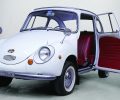
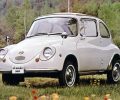
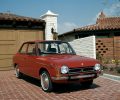
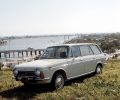
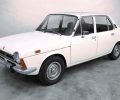

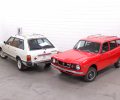
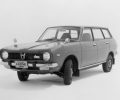
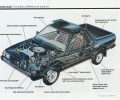
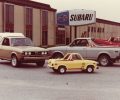
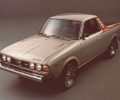
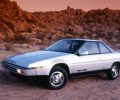
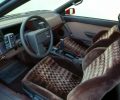
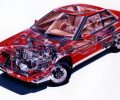
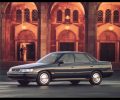
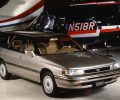
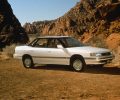
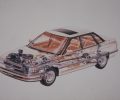
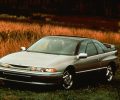

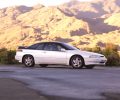
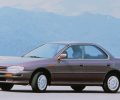
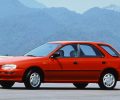
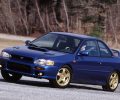
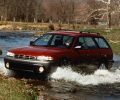
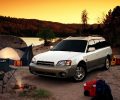

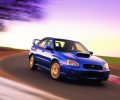
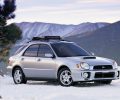
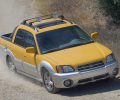
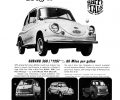
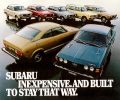

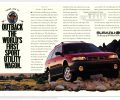
You must be logged in to post a comment.